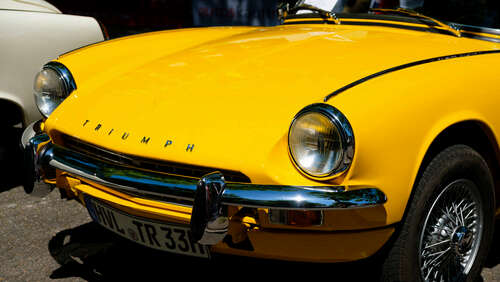
The Standard Motor Company had unusual reasons for acquiring Triumph. Standard had built Jaguar engines for years, but a series of disagreements between the companies had grown so bitter that Standard managing director Sir John Black bought the Triumph brand specifically to compete with Jaguar. The first in this new line of Triumphs was the Roadster, which was made from aluminum because steel was still hard to come by after the war.
The Triumph Roadster was powered by a Standard 1.8-liter four-cylinder, side-valve engine mated to a synchromesh four-speed transmission. Ironically, it ran on the same engine Standard made for prewar Jaguars, but the Roadster had a Solex carburetor and a lower compression ratio.
New Triumph models followed. By the early 1950s, Triumph was so well-known that Standard Motor bequeathed all of its sports car manufacturing to the brand, allowing Standard to focus on sedans. Triumph unveiled the first TR badged sports car, the TR2, in 1953. The TR2 would be Triumph’s signature car until 1981.
At the end of 1960, Leyland Motors Ltd. bought the Standard-Triumph company and rolled out several new cars designed by famed Italian designer Giovanni Michelotti, including the Spitfire, which made it onto our list of greatest British sports cars of all time. In 1966, Jaguar and the British Motor Corporation merged to form British Motor Holdings,which in turn merged with Leyland Motors Ltd. to create the British Leyland Motor Corporation.

